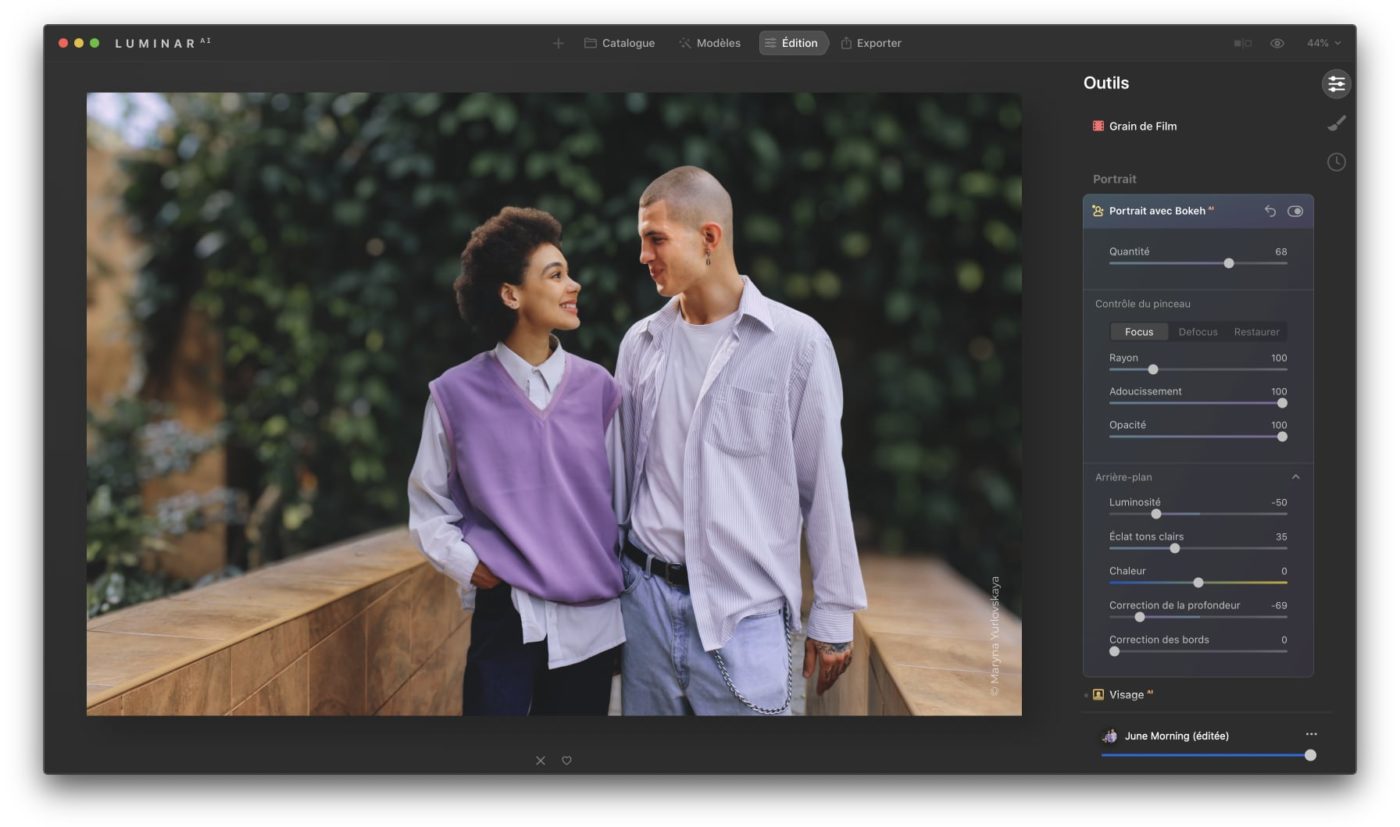

- #Luminar ai bokeh manual
- #Luminar ai bokeh full
- #Luminar ai bokeh software
- #Luminar ai bokeh download
The AI Sky Replacement tool (now called just ‘Sky AI’) is spectacularly good. Beyond these, though, are two sets of AI tools that are not part of the templates setup and are used manually for sky replacement and portrait enhancement. Luminar uses AI for many of the adjustments used in its templates, such as AI Structure, Atmosphere AI, Composition AI and more.
#Luminar ai bokeh manual
Once you’ve applied a template, you can quite easily drill down into the adjustments and make manual changes, or even add new adjustments. (Image credit: Skylum)Įach template uses a selection of Luminar’s filters and adjustment tools, and AI is used here too in order to tweak these adjustments to match each image and its subject matter. You can go into the filter settings, shown here, to make changes yourself, but the whole ‘Template’ experience still feels distinctly flat. Luminar’s Templates do not offer the variety or inspiration of other effects-based software.
#Luminar ai bokeh software
Clearly Skylum has monetisation plans beyond simple software sales.
#Luminar ai bokeh download
You can also go to the Luminar marketplace to buy and download more, or subscribe to Luminar X membership.
#Luminar ai bokeh full
You can see the full list of template categories by scrolling down the sidebar. You’re not stuck with the template categories Luminar suggests. These are split into categories – Luminar will suggest some categories in a swipeable carousel at the top of the sidebar. When you open an image, Luminar AI will use artificial intelligence to work out what it’s a picture of and then suggest suitable templates to give it a particular look. These sound like they are all part of the same thing, but in fact they operate differently. Luminar AI users artificial intelligence in two main areas: 1) templates and adjustments, 2) AI effects. (Image credit: Skylum) Here’s another food shot, but this time Luminar’s AI decided it might fit in the Objects Collection instead. Not a bad call! (Image credit: Skylum) It then offered some Influencer templates, but you have to click on them to see the effect – there are no thumbnail previews to help you choose.

Templates and adjustments Once this photo had loaded fully (this can take a few seconds for a RAW file), Luminar’s AI figured out that this might need an ‘Influencer’ template – see the sidebar, top right. The header shoot of Pisa is mine, as is the one of the water tower at the end, but Skylum has been kind enough to supply sample images for reviewers, so I’ve used those elsewhere for variety and to help demonstrate the portrait AI features. It’s not a Lightroom rival, though, which may disappoint photographers who were following this software’s previous trajectory. It also has basic but effective image browsing tools. It does do basic image enhancements, but that’s not really its main purpose and they are typically added as part of an editing template. It sheds a lot of the technical depth of control of Luminar 4, putting almost all its faith in machine learning AI to reach a new, larger audience that Skylum believes has no time for sliders and technicalities and just want spectacular results fast. Luminar AI is officially the replacement for Luminar 4 but spears off in a whole new direction. It can even suggest templates (‘looks’) based on the contents of your images and has some pretty impressive sky replacement and portrait enhancement capabilities. Luminar AI is a photo editor that uses the power of artificial intelligence and machine learning to automate many photo editing tasks.


 0 kommentar(er)
0 kommentar(er)
